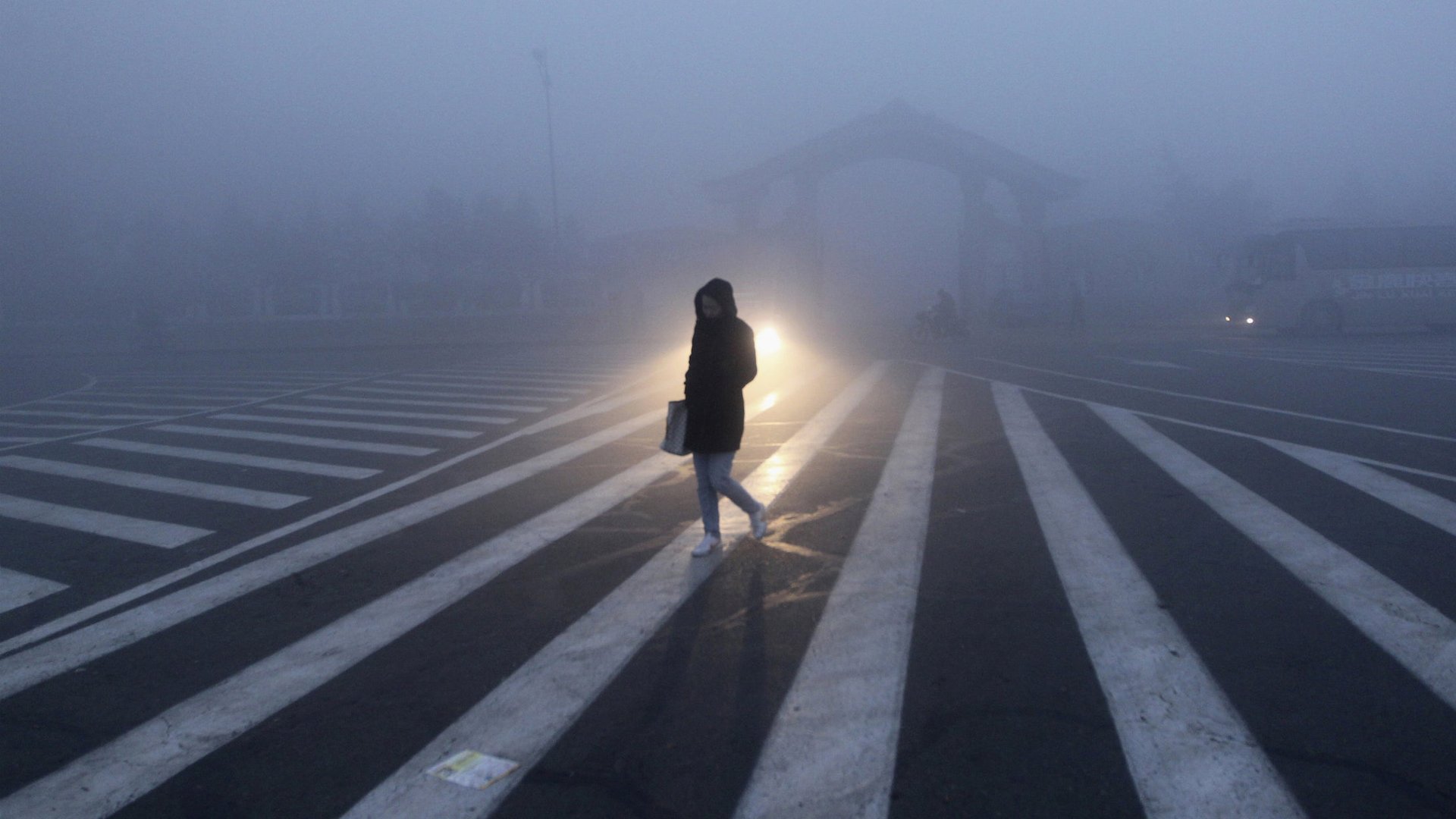China discovers that pollution makes it really hard to spy on people
Gasping for oxygen in the noxious air that so often enshrouds northern China is never pleasant. What really twists the knife is that the state media often refer to it simply as “fog,” not pollution, as though it came wafting in on a zephyr, and wasn’t belched by a smokestack in Hebei.


Gasping for oxygen in the noxious air that so often enshrouds northern China is never pleasant. What really twists the knife is that the state media often refer to it simply as “fog,” not pollution, as though it came wafting in on a zephyr, and wasn’t belched by a smokestack in Hebei.
Well here’s some vindication for anyone who ever found this annoying. The Chinese government has realized that whatever it is clogging the atmosphere, it’s rendering government surveillance cameras ineffective (paywall), reports the South China Morning Post. Since that compromises national security, the government has hired two teams of scientists to come up with a fix, says the newspaper. But one reason they’re flummoxed by their assignment is that the haze is not simply “fog,” says Yang Aiping, a digital imaging expert and leader of one of the teams.
“Most studies in other countries are to do with fog. In China, most people think that fog and smog can be dealt by the same method,” Yang told the SCMP. “Our preliminary research shows that the smog particles are quite different from the small water droplets of fog in terms of optical properties.” For example, infrared imaging, which can usually help cameras penetrate fog or even smoke, can’t see through the thicket of particulate matter in Chinese air.
This is a big worry for the Chinese government, which as of January 2013, had installed some 20 million cameras on streets, public parks and even in elevators throughout China. So is the government going to redouble its already controversial efforts to reduce pollution? Probably not. Yang told the SCMP her team would “heavily revise, if not completely rewrite, algorithms in some mathematical models” for the imaging software used with the security cameras. The effect of the pollution might be to make China’s surveillance state even better at its job.